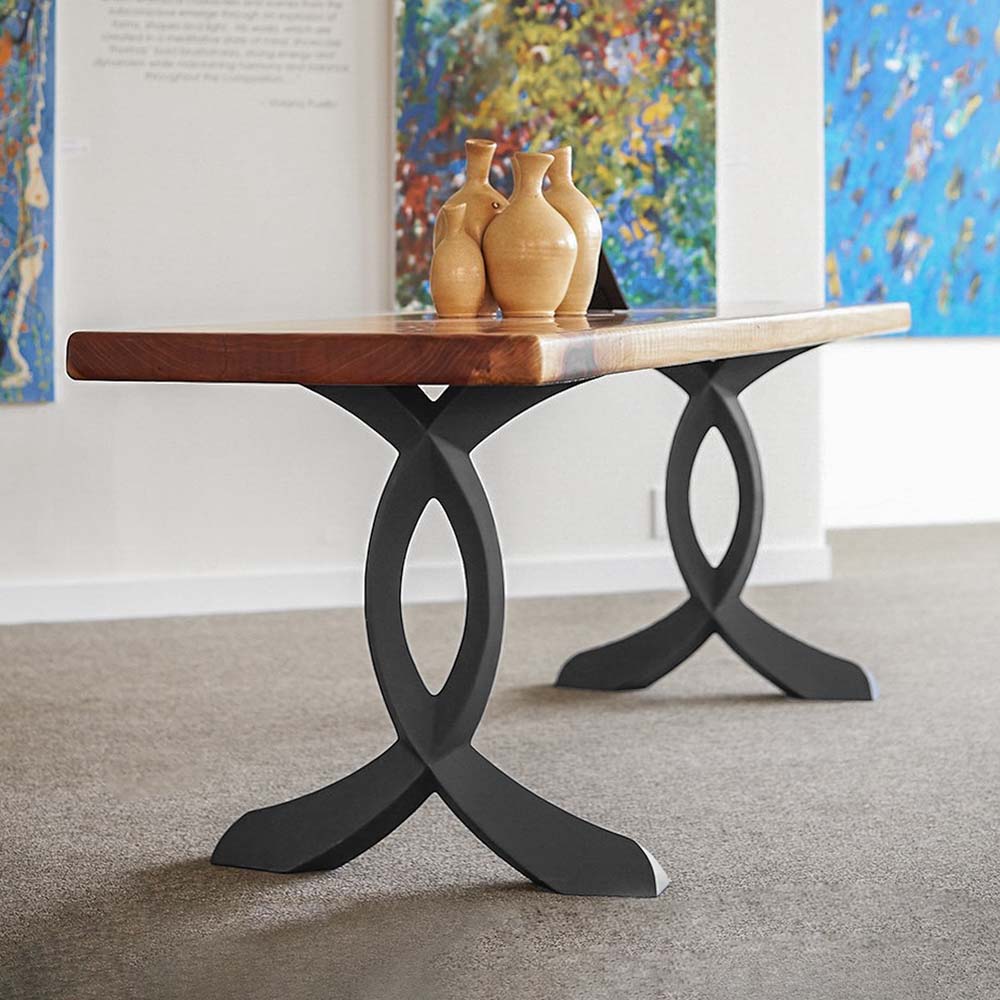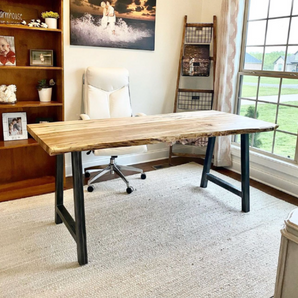Dining Room Table Legs That Integrate Functionality and Modern Style
Dining Room Table Legs That Integrate Functionality and Modern Style
Blog Article
Choosing the Perfect Eating Table: What Styles Job Best for Your Home?
Selecting the suitable eating table for your home can be a nuanced procedure that stabilizes appearances and performance. To navigate these options properly and locate a table that absolutely enhances your home, take into consideration the adhering to aspects in information.
Examining Your Room
Evaluating the dimensions and design of your dining area is a crucial initial step in picking the perfect dining table. Begin by gauging the length and size of the area, representing entrances, windows, and various other building attributes that can affect table placement. This makes sure that your table not only fits yet also enables comfortable movement around it.
Take into consideration the number of people you typically amuse. A table must fit your household's day-to-day demands while supplying adequate adaptability for periodic guests. As a guideline of thumb, assign a minimum of 24 inches of table width per person to guarantee a comfy dining experience.
It's additionally important to preserve appropriate clearance around the table. Preferably, there must be at the very least 36 inches in between the table side and walls or various other furniture, allowing simple gain access to and movement. For rooms where chairs with arms or extra storage units like buffets are included, increasing this clearance to 48 inches is recommended.
Lighting and environment play considerable functions as well. Make certain that your eating table lines up with existing lighting components or strategy for appropriate lighting services. This detailed spatial assessment guarantees that your eating table not only fits physically but likewise balances with your space's total performance and visual.
Popular Table Styles

Conventional table often include elaborate details, bent legs, and abundant wood coatings, evoking a sense of classic beauty. They are perfect for homes with classic design or those looking to include a touch of elegance to their eating area.
Modern eating tables prioritize simplicity and clean lines, often incorporating materials like glass and steel. These tables are optimal for modern areas, providing a sleek and uncluttered appearance that enhances minimal design philosophies.
Rustic table, on the other hand, stress all-natural materials and a handmade appearance - dining room table legs. They often include reclaimed timber and a troubled finish, producing a warm and inviting atmosphere. These tables function well in farmhouse-style homes or those looking for a comfortable, natural feeling
Industrial dining tables combine resources such as steel and wood, commonly showcasing a practical aesthetic. This style is well-suited for loft spaces or metropolitan areas, including a touch of sturdy appeal and longevity to the eating experience.
Each design uses unique benefits, making it important to choose one that straightens with your home's overall layout and your individual preferences.
Product Selections
When choosing an eating table, the selection of material plays an important role in determining both the table's aesthetic appeals and performance. Wood, metal, glass, and composite products each offer special advantages and difficulties, making it critical to line up the material with your home's decor and way of living needs.
Wood is an ageless and functional alternative, available in varieties such as oak, walnut, and mahogany. Understood for its toughness and heat, timber complements both standard and contemporary insides. It requires regular upkeep to prevent scrapes and warping.
Steel tables, often crafted from stainless-steel, light weight aluminum, or functioned iron, are applauded for their modern charm and toughness. They are specifically fit for commercial or minimal setups but can be vulnerable to dents and may really feel cool to the touch.
Glass table bring an air of sophistication and openness, ideal for smaller rooms as they create an impression of even more space. While easy to clean, glass can be prone to smudges and calls for cautious dealing with to stay clear of chips and splits.
Composite materials, such as MDF and plywood, offer economical and adjustable options, though they might lack the durability of natural products. Selecting the ideal product guarantees your eating table is both a functional possession and a visual pleasure.
Shape and Size Factors To Consider
After figuring out the proper product for your table, the next factor to consider is choosing the ideal form and dimension click to read to match your area. The form of the table significantly influences the area's visual and capability. Rectangular tables, one of the most typical shape, are optimal for bigger rooms and can fit a greater variety of guests. They additionally enable an extra formal dining experience. Alternatively, rounded tables cultivate a sense of affection and are superb for smaller sized dining areas, urging discussion by eliminating corners and making everybody feel similarly consisted of.
As a guideline of thumb, allocate at the very least 24 inches of table width per individual to guarantee comfy dining. Additionally, think about the table's clearance room: there must be at least 36 inches between the table side and the wall surfaces or other furniture. More Info Extending tables provide adaptability if you frequently hold larger gatherings, providing extra seats when needed without occupying additional area daily.
Matching Your Decoration
Picking a table that integrates with your existing decoration is crucial in developing a natural and inviting area. Begin by analyzing your current interior decoration style, whether it be modern, typical, rustic, or eclectic. The dining table must enhance the general aesthetic, not compete with it. A smooth, minimalist table with tidy lines is suitable for a modern home, while a vintage, luxuriant table useful site fits a much more typical setup.
If your design includes cozy tones and natural products, consider a wood table to improve the natural feel. Alternatively, a glass or metal table may be more appropriate in an area dominated by great colors and industrial components.
Appearance plays an essential role as well. A rough-hewn, redeemed timber table can add character to a rustic area, while a refined marble surface can raise an extravagant eating location. Think about the scale and proportion of the table in relationship to the area size and existing furnishings. A well-matched dining table not only enhances visual appeal yet additionally enhances the general eating experience.

Final Thought
Choosing the perfect dining table demands mindful factor to consider of room, design, materials, form, and dimension (dining room table legs). Standard tables complement timeless interiors with abundant timber coatings, while modern tables match contemporary setups via glass and steel. Rustic styles introduce heat via natural materials, and industrial styles improve metropolitan atmospheres with raw components. Integrating the table with existing decor ensures both functionality and visual appeal, adding to a natural and aesthetically pleasing eating area.
Report this page